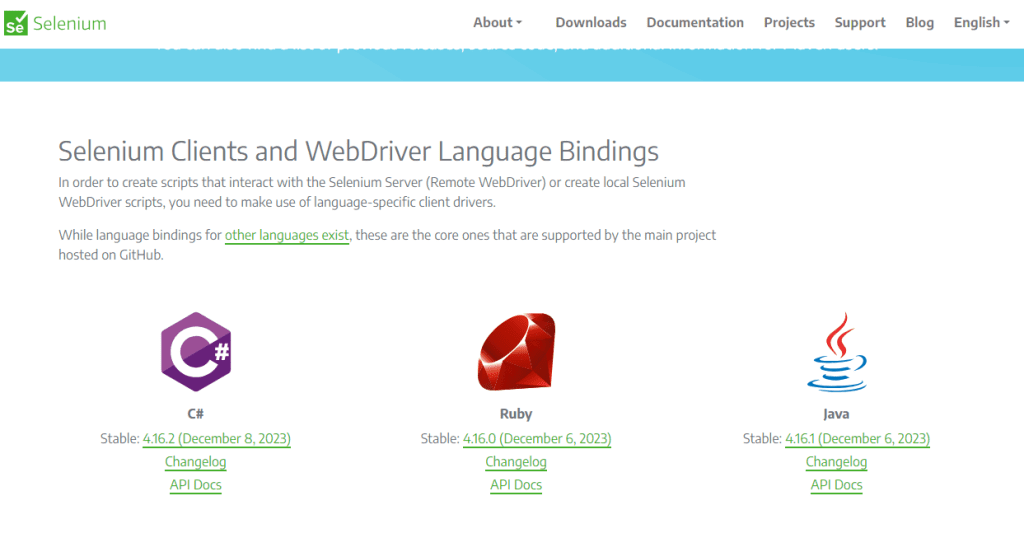7 Common Mistakes When Using Selenium WebDriver

Automation Testing is the process of using software to perform tests on a web application or system in an automated manner rather than manually performing the tests. Selenium WebDriver is a tool that can be used for automation testing in the software development industry. With Selenium WebDriver, developers can write scripts in a variety of programming languages (such as Java, Python, C#, and more) to automate the testing of web applications. These scripts can be used to perform tasks such as filling out forms, clicking buttons, and navigating to different pages, allowing developers to test their applications’ functionality and user experience.
Automation testing with Selenium WebDriver can be an effective way to save time and reduce the risk of errors like Mega Personal Error 701 in the testing process. It is commonly used for tasks such as functional testing, regression testing, and performance testing.
What is Selenium?

Selenium is an open-source tool that is commonly used for automation testing in the software development industry. It allows developers to write scripts in a variety of programming languages (such as Python, C#, among others) to automate the testing of web applications.
Selenium consists of many different components, including Selenium WebDriver and Selenium IDE. Selenium WebDriver is used to control web browsers and perform tasks such as filling out forms, clicking buttons, and navigating to different pages. It is a plugin for Firefox that allows users to record and play back tests in the browser.
Automation testing with Selenium can be used to test the functionality and user experience of web applications. And perform regression testing to ensure that changes to the codebase do not break existing functionality. It is an effective way to save time and reduce the risk of errors in the testing process.
Components of Selenium
Selenium consists of three different components as follows:
- Selenium WebDriver: This is the core component of Selenium and is used to control web browsers and perform tasks such as filling out forms, clicking buttons, and navigating different pages. It supports many different programming languages.
- Selenium IDE: This plugin for Firefox allows users to record and play back tests in the browser. It is a user-friendly tool that is useful for creating and debugging Selenium scripts.
- Selenium Grid: This component allows users to run Selenium tests in parallel, making it faster to execute large numbers of tests. It is particularly useful for distributed testing, as it allows tests to be run on multiple machines simultaneously.
Overall, these components work together to provide a comprehensive toolset for automating web browsers. And performing tasks such as automated testing, web scraping, and automating repetitive tasks on the web.
What Is Selenium WebDriver?
Selenium WebDriver is a tool used to automate web browsers. It allows you to write scripts in a variety of programming languages to control a web browser and perform tasks such as filling out forms, clicking buttons, and navigating to different pages.
Selenium WebDriver works by interacting with the web browser through a driver. Which is a piece of software that acts as a bridge between Selenium and the browser. There are drivers available for a variety of different browsers, including Chrome, Firefox, Safari, and Edge.
In addition to this, Selenium WebDriver is commonly used for tasks such as automated testing, web scraping, and automating repetitive tasks on the web. It is an open-source tool that is widely used in the software development industry.
What Are The Benefits Of Using Selenium WebDriver?
There are several benefits to using Selenium WebDriver:
- It is an open-source tool: As mentioned above, Selenium WebDriver is an open-source tool, which means that it is freely available and can be used by anyone. This makes it a cost-effective solution for automating web browsers.
- It supports a variety of programming languages: Selenium WebDriver supports a number of programming languages, including Python, Java, C#, and more. This makes it a versatile tool for developers with different skill sets and preferences.
- It supports a variety of browsers: Selenium WebDriver supports a number of different web browsers, including Chrome, Firefox, Safari, and Edge. This makes it a flexible tool that can be used to automate a wide range of applications.
- It allows for automated testing: Selenium WebDriver can be used to automate the testing of web applications. Making it an effective tool for ensuring that apps are working correctly and meeting the necessary standards.
- It can be used for web scraping: Selenium WebDriver can be used to scrape data from websites, making it a useful tool for data analysis and research.
- It can be used to automate repetitive tasks: Selenium WebDriver can be used to automate repetitive tasks on the web, saving time and reducing the risk of errors.
Overall, Selenium WebDriver is a powerful tool for automating web browsers and has a number of applications in the software development industry.
Common Mistakes When Using Selenium WebDriver
Selenium WebDriver is a powerful tool for automating web browsers, but it’s challenging. Here are seven common mistakes that users of Selenium WebDriver often make and how to avoid them:
1. Not Using the Latest Version of Selenium WebDriver
It’s important to use the latest version of Selenium WebDriver, as it will have the most up-to-date features and bug fixes. To check which version you’re using, you can call the get_version() method on your WebDriver instance. To update to the latest version, you can simply install the latest version of the Selenium package using pip install -U selenium.
2. Not Waiting for Elements to Load
One of the most common issues with Selenium scripts is that they may try to interact with an element on the page before it has finished loading. This can lead to a number of errors, including “ElementNotVisibleException” and “NoSuchElementException”. To avoid these errors, you can use Selenium’s built-in explicit wait functions, such as WebDriverWait and ExpectedConditions. These functions allow you to wait for a specific condition to be met before interacting with an element.
3. Not Handling Alerts and Pop-Ups
Alerts and pop-ups can be tricky to handle in Selenium as they are not part of the page’s HTML. You can use Selenium’s Alert class to handle these elements. Which allows you to accept, dismiss, or send keys to an alert or pop-up. It’s important to note that you must switch to the alert or pop-up using the switch_to.alert method before interacting with it.
4. Not Handling iFrames
iFrames are another element that can be difficult to handle in Selenium. To switch to an iFrame, you can use the switch_to. Frame method and pass in the iFrame element as an argument. Once you’re finished interacting with the iFrame, you can switch back to the main document using the switch_to.default_content method.
5. Not Handling AJAX
AJAX, or Asynchronous JavaScript and XML, is a technology used to update web pages asynchronously. This can cause issues when testing with Selenium. The page may not have finished loading before the script tries to interact with an element. To handle AJAX, you can use Selenium’s built-in explicit wait functions, as mentioned above, or you can use JavaScript to check for the completion of an AJAX request.
6. Not Handling Cookies
Cookies are small pieces of data that are stored on a user’s computer and are used to track their browsing activity. If you’re testing a web application that uses cookies. It’s important to clear the cookies before each test to ensure that you’re starting with a clean slate. You can do this using the delete_all_cookies method on the WebDriver instance.
7. Not Using the Correct Locator Strategy
Selenium offers a number of different ways to locate elements on a page. Including by ID, name, class name, tag name, and CSS selector. Choosing the correct locator strategy for each element is important. As using the wrong strategy can lead to unreliable and unstable tests. Generally, it’s best to use the most specific locator strategy possible, such as the element’s ID or a unique CSS selector.
By avoiding these common mistakes, you can get the most out of Selenium WebDriver and write reliable and maintainable scripts. Happy automation!
Conclusion
Selenium is widely used in the software development industry. And is an effective tool for automated testing, web scraping, and automating repetitive tasks on the web. It is a versatile and flexible tool that can be used in various contexts and has a large and active user community.
Selenium WebDriver is a tool commonly used in software development to automate web browsers. And perform tasks such as automated testing, web scraping, and automating repetitive tasks on the web. It allows developers to write scripts in a variety of programming languages (such as Python, Java, C#, and more) to control web browsers and interact with web pages.






